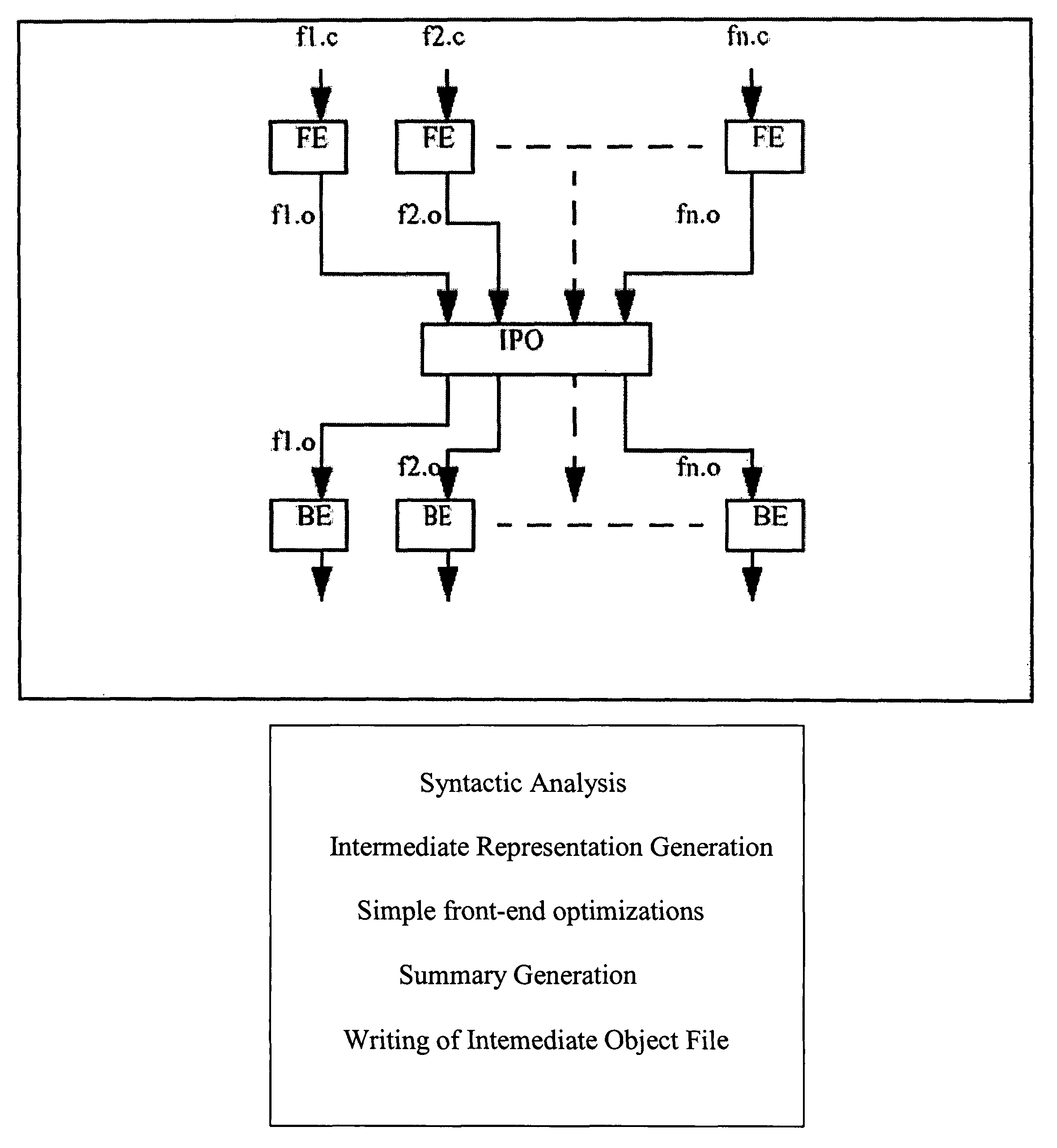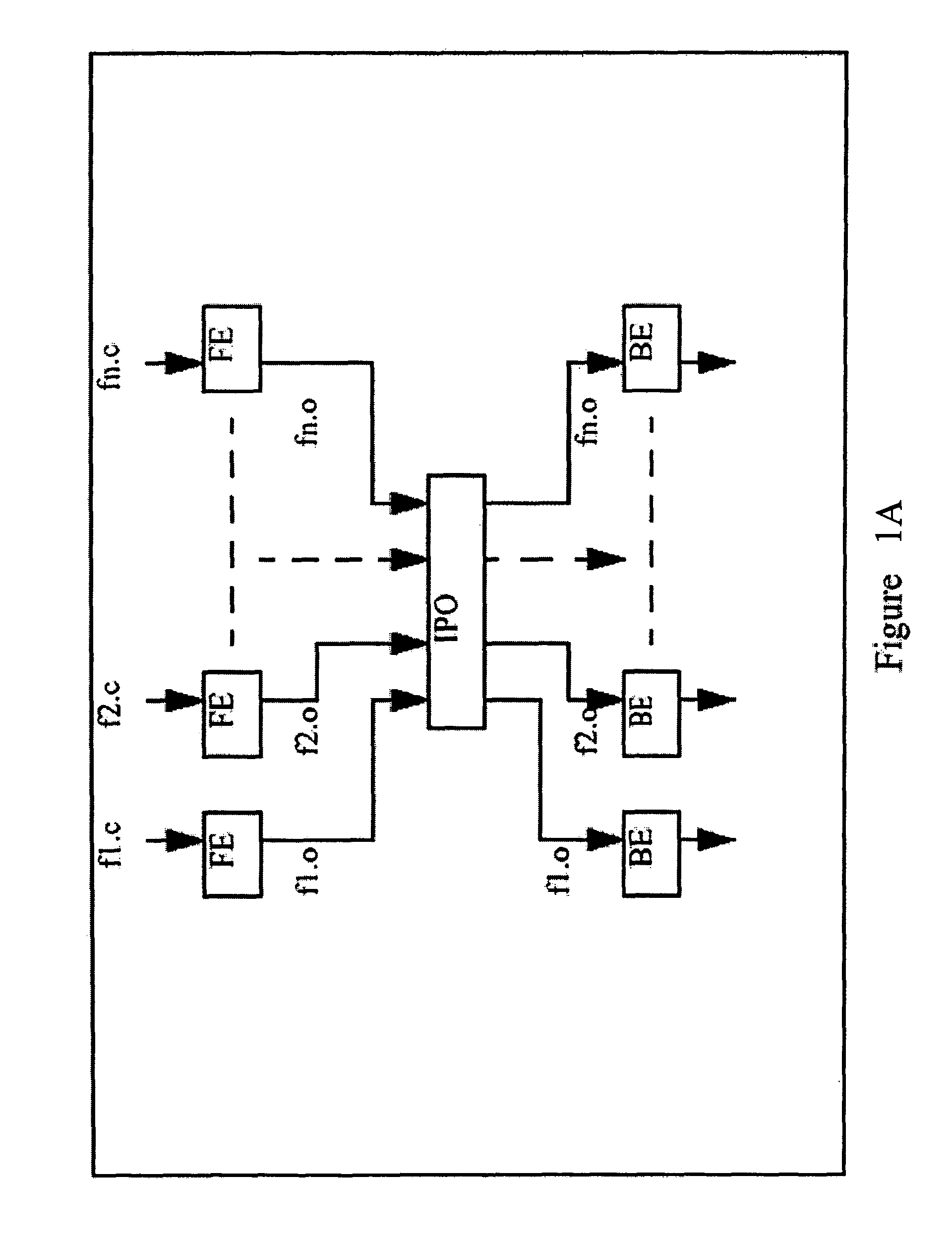Cross-file inlining by using summaries and global worklist
a global worklist and cross-file technology, applied in the field of software compilers, can solve the problems of limiting the level of application performance achieved by the compiler, limiting the access of the compiler, and existing state-of-the-art frameworks lacking proper updation when summaries are used, so as to achieve the best run-time performance and high degree of run-time performan
- Summary
- Abstract
- Description
- Claims
- Application Information
AI Technical Summary
Benefits of technology
Problems solved by technology
Method used
Image
Examples
Embodiment Construction
General Concepts
[0023]The following are some acronyms and standard terms used throughout the description.[0024]ID: A unique integer identifier[0025]IR: Intermediate representation of a program[0026]In-core: In main memory[0027]CG: Call graph[0028]FE: Front End[0029]IPO: Inter-Procedural Optimization[0030]CMO: Cross-Module Optimization[0031]BE: Back End of a compiler[0032]CFG: Control flow graph[0033]SPEC2000: SPEC CPU 2000 benchmark[0034]Module: Equivalent of a source file
[0035]Prior cross-module optimization techniques are typically inefficient and result in disadvantageously long compile times. The contribution of the present application relates to the area of cross-file inlining, so we will now describe some pitfalls in the design and implementation of a cross-file inliner.
[0036]When dealing with large applications consisting of thousands of files, the entire IR size becomes huge. Hence, performing analyses directly on the IR requires a large amount of time and memory making the ...
PUM
 Login to View More
Login to View More Abstract
Description
Claims
Application Information
 Login to View More
Login to View More - R&D
- Intellectual Property
- Life Sciences
- Materials
- Tech Scout
- Unparalleled Data Quality
- Higher Quality Content
- 60% Fewer Hallucinations
Browse by: Latest US Patents, China's latest patents, Technical Efficacy Thesaurus, Application Domain, Technology Topic, Popular Technical Reports.
© 2025 PatSnap. All rights reserved.Legal|Privacy policy|Modern Slavery Act Transparency Statement|Sitemap|About US| Contact US: help@patsnap.com



